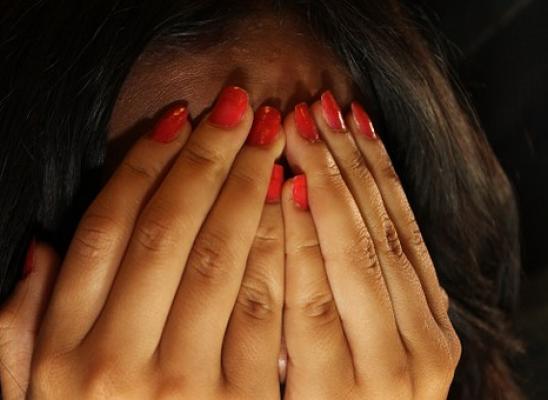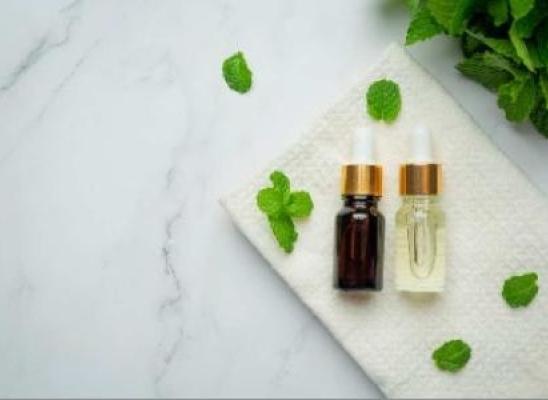Finding Healing from Skin Picking Disorder: Stories of Strength and What Really Helps

Online test
Find out the severity of your symptoms with this free online test
Note: The stories and experiences shared in this article are composites drawn from multiple individuals to protect privacy and confidentiality.
For years, JJ would stand at the bathroom mirror for hours, unable to stop searching for and picking at every perceived imperfection on her face until it felt “just right”. "Sometimes it felt like it wasn’t even me doing it. I knew I wanted to stop, but I couldn't."
JJ’s story is not unlike that of millions of people living with Excoriation Disorder, commonly known as skin picking disorder. It’s a disorder that affects millions of people who find themselves caught in a cycle of picking at their skin despite wanting desperately to stop. Many wonder if recovery is truly possible or beyond their reach. The fact is that recovery is possible. Learning about what helps, both from those who have walked that path and the therapists who treat it, can shine a light on the path forward.
Understanding the Cycle
Skin picking disorder affects an estimated 2-5% of the population, though many suffer without diagnosis. Skin picking is more than just a “bad habit." While it’s not completely understood, skin picking is thought to be a mechanism for regulating emotions or a response to things like stress, anxiety, or boredom. It brings temporary relief, but that relief is short-lived. That relief is followed by shame and emotional distress that triggers more picking, creating a vicious cycle that can be hard to break.
Mike, who struggled with skin picking for over a decade, describes the emotional weight this way: "My friends, my parents, even my coach would tell me to 'just stop it.' Believe me, I would’ve if I could have. But they didn't understand just how overwhelming the urges can be. Afterward, I'd feel disgusted with myself and avoid people for days while my skin healed. The shame was intense.”
Therapists who specialize in treating skin picking and other body-focused repetitive behaviors (BFRBs) agree that healing is possible. Breaking the cycle requires more than just a quick fix or just telling someone to “just stop”. Breaking this cycle requires both compassion and strategies to deal with both the picking behavior and the emotional underpinnings that drive it. It’s about finding tools and support to live with more freedom and less shame.
The Turning Point: Recognition Without Shame
One of the most common fears expressed by people living with skin picking is that they are somehow “broken” or “weak” and that they’ll never be able to stop.
"I spent years thinking I was just weak because nothing I tried worked,” shared Mina, who struggled with skin picking since her early teens. "I decided to try therapy. The day my therapist told me this was a real condition with a NAME changed everything for me. I wasn't broken. I didn’t need ‘fixing’. I had a real and most importantly, treatable disorder."
The power of this recognition can’t be underestimated. Therapists who specialize in treating BFRBs often cite this moment of recognition as the turning point for many clients. Learning they're not alone, that this is a clinically recognized disorder, often gives them that first glimmer of hope.
Both patients and therapists agree healing begins when shame is replaced with understanding.
What Makes Recovery Possible
The path to healing isn't linear and there will be times when symptoms wax and wane. Recovery is about embracing the journey and finding your recovery, whatever that looks like for you.
So, what helps? Consistent themes emerge from both clinical research and lived experience.
Cognitive Behavioral Therapy (CBT), particularly when combined with Habit Reversal Training (HRT), has been shown to be one of the most effective approaches to treating skin picking. This approach helps target both the behavioral and cognitive factors that drive skin picking.
"The breakthrough for me was learning that recovery wasn’t about perfection. I didn't have to fight the urge, and I could learn how to redirect it,” shares Elena. "My therapist taught me strategies I could use when I felt the urge coming on. It sounds so simple now, but having things I knew I could do changed everything."
Discovering that you can change how you manage the urges helps to avoid the shame spiral and empowers you to embrace your journey with confidence. Even being able to take a five-second pause can be transformative.
The Role of Self-Compassion
One of the most powerful elements of recovery isn't a clinical technique at all. It's self-compassion. Many people found that shifting from self-criticism to self-kindness opened the door to recovery.
"I spent years blaming myself for my skin picking," says Jena. "My therapist helped me understand how shame and always criticizing myself was fueling my picking. When I started treating myself with the same kindness that I showed my friends and family, my picking actually got better.”
Research solidly supports the power of self-compassion too. Studies have found that self-compassion promotes resilience and emotional regulation, both crucial factors for managing skin picking and other BFRBs.
Is It Ever Too Late?
It’s a question on the minds of many clients, especially if they’ve silently struggled for years. As time goes on, it can feel like the “window” is closing.
However, therapists will tell you that the answer is a resounding NO. It is never too late to seek help and find real change. Therapists who specialize in treating skin picking and other BFRBs have successfully treated clients from every season of life. One therapist treated a client in their 60s. Another therapist treated a client in their 80s!
Rather than age, the factor that seems to influence change most is the willingness to be open and curious about your experiences and what change can look like.
The Message of Hope
For anyone struggling with skin picking disorder, the collective message from those who've walked this path and those who treat skin picking is clear: healing is possible, help is available, and you deserve support. As one therapist put it, “We are a big community waiting for you.” The first step is often the hardest, but it's also the most courageous act of self-care.
If you’re ready to take that step, TrichStop is here to help. We have a team of experienced therapists who can help you find the healing you seek. And online therapy makes seeing a therapist more comfortable and convenient than ever. Whether it’s your first time or you’ve tried therapy before, there is help and there is hope.
References
1. https://emedicine.medscape.com/article/1122042-overview
2. https://adaa.org/living-with-anxiety/personal-stories/pulling-power
3. Neff, K. D., Long, P., Knox, M. C., Davidson, O., Kuchar, A., Costigan, A., … Breines, J. G. (2018). The forest and the trees: Examining the association of self-compassion and its positive and negative components with psychological functioning. Self and Identity, 17(6), 627-645. https://www.tandfonline.com/doi/abs/10.1080/15298860309032
Online test
Find out the severity of your symptoms with this free online test
Start your journey with SkinPick
Take control of your life and find freedom from skin picking through professional therapy and evidence-based behavioral techniques.
Start Now



